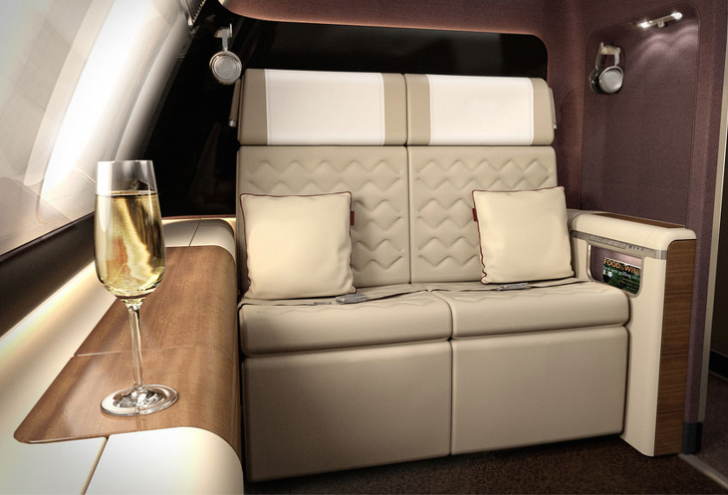With global air travel volumes not expected to return to pre-COVID-19 levels until at least 2024, airlines have had to adjust their capacity planning accordingly. There’s little point flying a fuel-guzzling A380 if you can’t fill the seats, and no point taking delivery of spanking new aircraft if they’re just going to sit idle on the tarmac.
Singapore Airlines has been working with Airbus and Boeing to revise its aircraft delivery schedule, so that some aircraft in their order book will be delivered over a longer period than originally contracted. This allows SIA to defer more than S$4 billion of capital expenditure between FY 20/21 and FY 22/23 to later years, easing pressure on cash flow.
| SIA Revised Projected CapEx (in S$M) | |||
| Aircraft | Other Assets | Total | |
| FY20/21 | 2,800 |
300 | |
| FY21/22 | 3,700 |
300 | 4,000 |
| FY22/23 | 4,100 |
4,500 |
|
| FY23/24 | 3,800 |
300 |
|
| FY24/25 | 4,000 |
300 |
4,300 |
What’s interesting is that SIA has also been successful in converting some of its Boeing orders, which has implications on what type of First and Business Class seats we’ll be seeing in the future.
SIA has converted 14 B787-10s orders into 11 B777-9s

Singapore Airlines announced yesterday that it had successfully negotiated with Boeing to convert 14 Boeing 787-10 aircraft into 11 additional Boeing 777-9 aircraft. With this adjustment, the order book now reads:
| Aircraft | On Order |
| Airbus A320 | 35 |
| Airbus A350-900 | 15 |
| Boeing 737-8* | 31 |
| Boeing 787 Family | |
| Boeing 777-9 | |
| *AKA the Boeing 737 MAX 8- though you can’t exactly blame airlines for dropping the “MAX” term ^29 for Singapore Airlines, 5 for Scoot |
|
Singapore Airlines uses the B787-10 for short and medium-haul routes, and that’s reflected in the choice of Business Class seat. It still reclines into a full-flat bed (better than a lot of competitors in the market), but it’s notably more high density than any other Business Class product the airline has.

In contrast, the B777-9 is intended for long-haul flying, and Singapore Airlines intends to debut its new First and Business Class on this aircraft. No details have been released about these products, although expectations are high. SIA’s CEO has offered this vague quote:
“We will of course be going out to our customers to get better ideas about what they really want in the next quantum leap of our product.”
“It will be a first class that we believe when we launch (it) will again set industry standards.”
In any case we’ll be waiting for some time yet. Singapore Airlines originally intended to take delivery of their first B777-9 in 2022, but program delays mean that 2024 is the earliest we could realistically see the aircraft arriving. Boeing only expects to start deliveries in late 2023, and both Emirates and Lufthansa are ahead in the queue anyway.

What does this mean for First Class seats?
For all the talk about the death of First Class, it’s interesting to see Singapore Airlines swapping B787-10s (which don’t have First Class) for B777-9s (which do). No doubt a driving factor is the integration of SilkAir and its narrowbody B737-800s, which gives the airline a lot more flexibility with its regional fleets- why operate a 337-seat B787-10 when a 162-seat B737-800 does the job?
But either way, an increase from 20 to 31 B777-9s means 55% more First Class capacity, and that’s ultimately good news for those with aspirational redemptions in mind. Over the past few years, we’ve seen Singapore Airlines steadily cut First Class capacity:
- The latest A380-800s cut the number of Suites from 12 to 6 (and SIA intends to retire more than a third of this fleet)
- When the Boeing 777-300ERs were upgraded from the 2006 to 2013 cabin products, the First Class cabin was cut from 8 seats to 4 seats
- The only other aircraft to have First Class seats, the Boeing 777-300s, was recently retired
A larger number of B777-9s in the Singapore Airlines fleet means we can still look forward to First Class (and a brand new product at that) on long haul routes in the years to come, even if the overall trend is towards fewer seats in the pointy end of the plane.
Of course the counterbalancing factor is that the B777-9 is meant to be a replacement for the B777-300ER, and we’ll lose some First Class capacity as the latter is progressively retired. However, all the B777-300ERs would be retired sooner or later, and the fact remains that we now have 11 more aircraft with First Class than originally envisioned.
Conclusion

While we won’t see the B777-9 flying for Singapore Airlines for at least three more years, I’m pleased that there’ll be an increased number of opportunities to redeem miles for First Class.
It’s exciting to think of what airlines could do with the wider cabin on the B777-9 (compared to the B777-300ER). Cathay Pacific, Emirates, Lufthansa and Qatar have already announced their intention for new premium cabin products on these aircraft, so Singapore Airlines will have its work cut out for it.
Of course this is a moot point until we’re actually able to fly again, but at least it gives us something to look forward to.







55% eventual increase in First class capacity might be the most optimistic thinking. I got a sneaky feeling the 11 addidtional 779 are for replacing the 388s. Realistically only London and Sydney are premium enough for SQ to keep its 388s with the margins required, the rest of the market it flies the 388 to has such low ticket pricing that flying 2 781 or 359s there would be a better option post pandemic instead of 1 388.
Oh it clearly won’t be a 55% increase in first class capacity *overall* that’s for sure. But compared to the baseline of 20 777-9s, it’s still more.
One way or another, first class is shrinking. This helps offset the trend a bit.